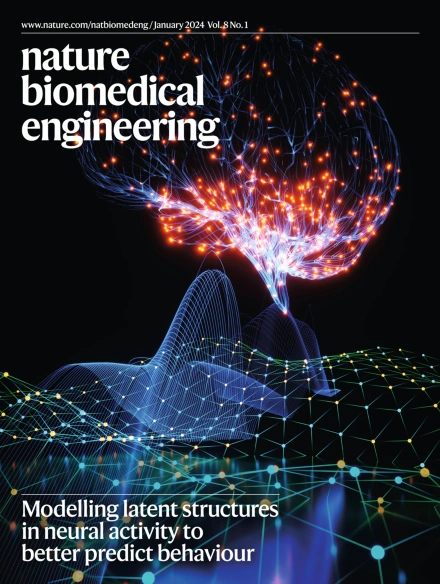Targeted clearance of extracellular Tau using aptamer-armed monocytes alleviates neuroinflammation in mice with Alzheimer's disease.
IF 26.8
1区 医学
Q1 ENGINEERING, BIOMEDICAL
引用次数: 0
Abstract
Extracellular Tau determines the progression of Alzheimer's disease, yet therapeutic strategies targeting it are hindered by poor brain delivery and limited clearance. Here we developed a Tau-clearing cell therapy based on monocytes functionalized with a high-affinity Tau-specific aptamer. The aptamer was covalently conjugated to the surface of monocytes (derived from bone marrow leucocytes and cultured under monocyte-inducing conditions) via bioorthogonal chemistry without affecting their viability or function. Upon intravenous administration in mice expressing mutant and disease-relevant human Tau, the engineered monocytes actively crossed the blood-brain barrier and accumulated in Tau-rich brain regions such as the hippocampus and striatum. They efficiently phagocytosed extracellular Tau, leading to a significant reduction in Tau burden. As a result, glial activation was suppressed, neuroinflammation was alleviated, and neuronal and mitochondrial integrity was preserved. Long-term treatment improved memory and spatial learning, without inducing toxicity or behavioural side effects. These results demonstrate that aptamer-guided monocytes can achieve targeted delivery, effective clearance and sustained neuroprotection, offering a promising strategy for therapeutic intervention in Alzheimer's disease.利用配备适配体的单核细胞靶向清除细胞外Tau可减轻阿尔茨海默病小鼠的神经炎症。
细胞外Tau决定了阿尔茨海默病的进展,然而针对它的治疗策略受到大脑递送不良和清除有限的阻碍。在这里,我们开发了一种基于高亲和力tau特异性适配体功能化的单核细胞的tau清除细胞疗法。通过生物正交化学将适体共价偶联到单核细胞(来源于骨髓白细胞并在单核细胞诱导条件下培养)表面,而不影响其生存能力或功能。在表达突变和疾病相关的人Tau的小鼠中静脉注射后,工程单核细胞积极地穿过血脑屏障,并在富含Tau的大脑区域如海马和纹状体中积累。它们有效地吞噬细胞外Tau,导致Tau负担显著减少。结果,胶质细胞激活被抑制,神经炎症得到缓解,神经元和线粒体的完整性得以保存。长期治疗改善了记忆和空间学习能力,没有引起毒性或行为副作用。这些结果表明,适配体引导的单核细胞可以实现靶向递送、有效清除和持续的神经保护,为阿尔茨海默病的治疗干预提供了一个有希望的策略。
本文章由计算机程序翻译,如有差异,请以英文原文为准。
求助全文
约1分钟内获得全文
求助全文
来源期刊

Nature Biomedical Engineering
Medicine-Medicine (miscellaneous)
CiteScore
45.30
自引率
1.10%
发文量
138
期刊介绍:
Nature Biomedical Engineering is an online-only monthly journal that was launched in January 2017. It aims to publish original research, reviews, and commentary focusing on applied biomedicine and health technology. The journal targets a diverse audience, including life scientists who are involved in developing experimental or computational systems and methods to enhance our understanding of human physiology. It also covers biomedical researchers and engineers who are engaged in designing or optimizing therapies, assays, devices, or procedures for diagnosing or treating diseases. Additionally, clinicians, who make use of research outputs to evaluate patient health or administer therapy in various clinical settings and healthcare contexts, are also part of the target audience.
 求助内容:
求助内容: 应助结果提醒方式:
应助结果提醒方式:


